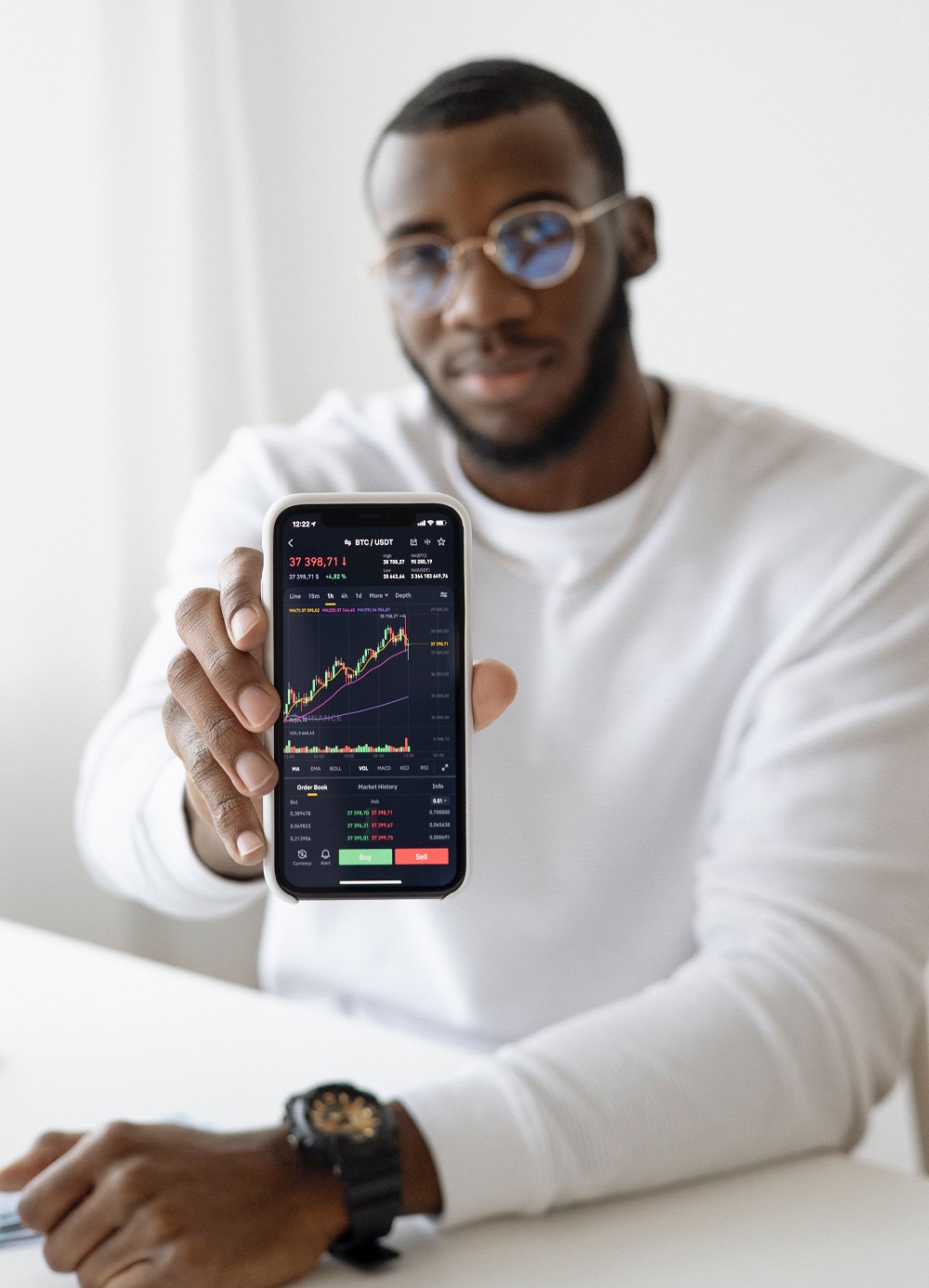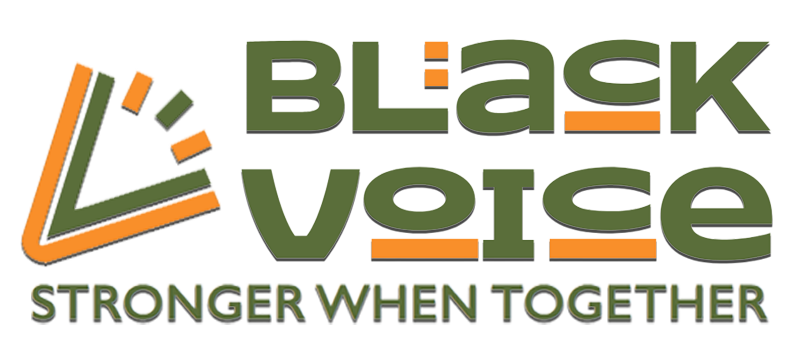By Yanet Mengistie
Posted on November 19, 2021
When someone hears the word investing they immediately might either be intrigued or disinterested. Investing is a financial growth strategy that many believe is only available to the elite of society, but this is not true. Investing is a great way to build wealth and achieve financial goals. For BIPOC who have been barricaded out of wealth build because of racism, the idea of investing can be even more challenging. In fact, a study conducted by ABC News found that only 33.5 percent Black households in 2019 owned stocks. White households owned 61 percent. These statistics show that there is a lack of Black individuals using investing as a mechanism to propel themselves financially.

Why Black communities specifically benefit from investing
While all racial and ethnic communities can benefit from investing, Black communities can gain particular benefits. Investing can create greater generational wealth that can allow for Black communities to attain financial freedom which will elevate their socioeconomic status. However, Black communities in both the United States and Canada have struggled to do this because there have been laws and policies preventing Black individuals from owning property.
In the early days of Western countries, having property was an extreme financial asset. In Canada specifically, this is displayed with the Black communities in Nova Scotia who arrived there from 1783 to 1815. They came to Nova Scotia under the premise that they would have not just their freedom, but land. However, the majority of Black Nova Scotians were not given actual deeds to their land that would signify homeownership. Instead, they were given “tickets of location” and “licenses of occupation.” This meant that they could not sell or mortgage their property or even pass it down to their next of kin. This placed these Black Canadians at a financial disadvantage compared to their white counterparts, because whites owned their property and were able to do whatever they pleased with their land. So white property owners turned their properties into businesses such as agricultural estates that could generate more income.
Owning property aided in propelling the financial gains of white Canadians, but since the majority of Black Canadians did not attain the land deeds they were promised, they remained stagnant and struggled financially, creating a “cycle of poverty” for Black Nova Scotians. Investing in assets like the stock market is a modern-day tool that can reduce cycles of systemic financial woes for Black communities.
Basic of investing
Let’s get into investing 101. When we talk about investing in this article we are talking about investing in the stock market. The stock market is essentially a virtual marketplace in which stocks are bought or sold. You may have heard of a few such as the New York Stock Exchange (NYSE) or the market in Canada named the Toronto Stock Exchange (TSX). As you can see, countries have different stock markets. This does not mean a Canadian cannot invest in the American market, it just means you may have to pay a withholding tax so that before money from a US stock gets into your investment account, it will already have a small tax deduction.
A stock is a small piece of ownership in a company, so if you own stock from a company such as Apple, you own a small part of Apple. This means that if the company sees financial success you will gain a profit. However, if the company crashes or begins going through bankruptcy, your profits will take a hit. That may sound frightening but, with education, there are ways to navigate the market to your advantage. One of these ways is through learning the different types of stocks you can invest in. While stocks can be overwhelming, for clarity they will be put into three groups which are: exchange-traded funds (ETF), Mutual Funds and individual stocks. Individual stocks are a stock of a single company like Apple, Bell, or other companies on the stock markets. So you could buy an Individual stock of Bell for CAD $63.71 as of August 7, 2021.

ETFs and Mutual Funds offer the same benefits but have some differences in approaches. They both are essentially baskets of stocks in which one ETF or Mutual Fund will contain a bunch of stocks. For example, the ETF from the company Vanguard called VFV (most stocks have what is called tickers which is essentially their short form) owns stocks from the 500 largest stocks on the United States market, such as Tesla, Facebook and others. So if someone were to buy one VFV stock they would own smaller portions of some of the best-performing companies in the United States. The difference between these two stocks is in the way they are managed.
With an ETF, passively managed means the company that assembled the ETF, such as Vanguard, puts together the collection of stocks and essentially does not actively sell or trade the stocks within the ETF. The company simply lets the ETF endure the highs or lows of the market or just tries to create a portfolio of stocks that would mimic the best parts of the stock market by buying the best-performing stocks that appear to have longevity. While with Mutual Funds they are being actively managed meaning there are managers or a management team of the Mutual Fund who still are actively on a daily, weekly, or monthly basis buying or selling the variety of stocks within the Fund to prevent any financial losses they predict. For instance, if the managers predict that the fossil fuel industry will take a hit due to upcoming government sanctions on environmental protections, the managers would begin selling any fossil fuel stocks within a Fund. Something else that is significant about mutual funds and ETFs is that they will have fees for managing them. Since there is a person, people, or company managing your investment you will be charged a fee called a Management Fee or Expense Ratio (MER), this can range in price as VFV for instance has a fee of 0.08 per cent (8 cents).
What makes a good or bad investment?
When picking out which stocks to buy, some may wonder whether they are making a mistake, so they want to know what goes into making a good or bad investment. Although you can look up Youtube videos, news reports, or articles revolving around what to invest in at the end of the day, what an individual invests in is based on their values or choices. Some of these choices will see short term gains and long term loss and others will be the opposite. Getting into the stock market quickly and making risky investments to gain money, then selling stocks to pay off loans and get a down payment for a purchase is considered a short term gain and is risky. As, since you would have had to sell all your stocks, you would then have to start all over in the future. That’s why many experts suggest holding your stocks long-term to gain the benefits of compounding interest. This is when you reinvest your earrings from stocks back into your investments account, garnering you larger profits over time than someone who withdraws their earrings sporadically.
Therefore, holding your stocks allows you to further extend your profit because the longer you have the stock the more compounding interest you will gain. However, if someone gets lucky and invests in something at the right time, they could make a large profit as well. But this is rare and holds a lot of risks, as one could lose all their money. Many organizations such as the U.S. Securities and Exchange Commission have found that the safest way to invest that will help increase your profit over time is by just buying the same stocks monthly for a long period of time. What these studies also said was that one should diversify their stocks, as you don’t want to have too many stocks in one sector because if that sector takes a downturn, you will lose a lot of money. Just like with the fossil fuel example, if one only owned stocks in fossil fuel companies and the sanction came, they would lose a lot of money. That is why it is key to stick to the same stock from a variety of sectors that way if one takes a hit, you are only losing in one area, making your investment portfolio overall less risky.
Where and how can you start investing in Canada?
To get the most financial benefit out of investing you have to think about whatever account you open as a savings account in which you put money and don’t think about it afterward. Many people tend to want to check the market updates daily, but that can be stressful and cause you to sell your stocks at the slightest dip in the market. So just make monthly deposits and relax. When you go to a specific platform to open your account you’ll be asked what type of account you want to open, depending on what account you open you can receive tax benefits. The best account to open for a beginner is a tax-free savings account (TFSA). This is because you will not have to pay taxes on any gains you make. TFSAs have a contribution limit of $6,000 annually, meaning you can only put in $6,000 into the account a year. The contribution limit changes yearly but it tends to go up every year. Furthermore, if you don’t use all the contribution room it can be carried into the next year. For example, if you contribute $3,000 in a year then the next year you would get the $6,000 plus the $3,000 leftover from the previous year. Giving you $9,000 in contribution room that new year.
There are several platforms you can use to start investing, but the decision will come down to your personal preference:
Wealthsimple Trade vs Wealthsimple Invest
There are two versions of Wealthsimple: Wealthsimple Invest, and Wealthsimple Trade. Wealthsimple Invest essentially asks you questions on your comfortability with investing and financial goals. Based on your answer, Wealthsimple Invest will set up a stock portfolio filled with your stocks from a variety of global markets and sectors ready to go. This is supposed to be an autopilot type of investment strategy where you do not have to think too much about the ups and downs of the market as WealthSimple Invest will sell the stocks if it is deemed a loss to your goals. Wealthsimple Trade, on the other hand, allows you to pick whatever stocks you want, it is self-directed so you can buy and sell anytime you please. There are no fees for opening or having both accounts and buying and selling stocks is free as well. Both versions also have desktops and apps so you can monitor your account as you please. However, they may not give you access to all the stocks on the American market as of yet, so someone wanting broader exposure to the United States market might not prefer this platform.
Questrade
Here is another online investing platform. Questrade also has a self directed option where you can pick what stocks you seek to buy and sell. However, they do have fees. For every trade you will be charged between $4.95 to $9.95. This can be a negative for someone who is investing lower amounts because it eats away at your gains, whereas someone who is investing larger amounts at a time may see greater gains than losses. Furthermore, Questrade offers basically the entire United States market to its users.

Banks
When it comes to Canadian banks and investing they all offer very similar options. The larger banks such as TD Canada Trust charge many fees that may eat away at the gains of the average investor who isn’t extremely wealthy but is trying to attain wealth. TD for instance charges a $9.99 flat commission fee for buying stocks. They also have what is called Active Trader Pricing which means that anyone who makes under $150 for a quarter of the year will be charged a fee greater than $7 every quarter of the year. Furthermore, there are maintenance fees in which you will be charged $25 per quarter if your accounts hold less than a certain amount. In the case of TD it is $15,000. These charges alone exceed $100, which can be too much for new investors who are looking to start small. Many of the other big Canadian banks follow this same fee pattern, so banks may not be the best place for someone starting out with a small account.
Investing, in conclusion, is not just a way to get money but to build long term wealth. When generations are financially stable they can pursue dreams and goals that would have been unavailable to them had they not had the financial means. This is especially significant to Black communities who have had the opportunity to build generational wealth stipped away from them. Investing is a step in Black communities disrupting the financial class system that has pushed them away for centuries.
Yanet Mengistie is an experienced Writer, Researcher and Creative who is ready to hit the ground running with Black Voice. Driven by having previously worked as a Content Writer for a company that sought to uplift small businesses in Northern Canada, she takes joy in using her writing to uplift small or marginalized voices. As a Writer with Black Voice, her goal is to combine this passion for small businesses with this publication's mission of empowering Black individuals across Canada. Yanet is committed to ending the marginalization of Black Canadian perspectives and opinions. She hopes to bring Black excellence, concerns or hot topics to the forefront through her work with Black Voice.

